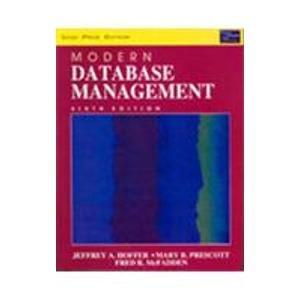Question
Sam program will be used (systems advisor program) City, Solar Panel, Inverter, Parametrics Analysis Parameter Each student should submit (upload to moodle) the following documents
Sam program will be used (systems advisor program)
City, Solar Panel, Inverter, Parametrics Analysis Parameter Each student should submit (upload to moodle) the following documents until the deadline (students should check their files to make sure that all necessary files are attached, and that they are openable in another computer, as no other files will be accepted later.), any missing file will result in a deduction from the total points:
All SAM simulation files All weather files needed for simulations SAM report files (originally created by SAM) A word file, containing the following details:
Student name and surname
Student number
Selected parameters (City, Solar Panel, Inverter, Parametrics Analysis Parameter), as shown below in the related table
Parameter Selection
City
Solar panel
Inverter
Parametrics Analysis Parameter
Data found from Internet (or any other source) in a table format, with references, as shown below
Data Type Value Reference
Inflation rate
Tilt angle
etc.
Answers of the questions and comments Screenshots, etc.
Q1) (64 points) Important note: each student should provide references in the report for the values found from Internet or any other source, otherwise the student will lose points for each forgotten reference). Make a simulation of a new PV system in terms of performance and financials using the following characteristics:
Location: The system will be located in a city selected by the student (each student will select a different city) in which the weather data is available in a weather database such as EnergyPlus or Climate.OneBuilding websites (not from the ones already available in SAMs database). Utility rate should be found from Internet for the chosen country/city (with reference). If there is time of use or demand charges, they should be applied. The cost of electricity is expected to escalate 0.5% per year in the next 25 years.
Customer: The system will be specified by component and its intended customer is a home owner. The homeowner has access financing via standard loan interest payments at a loan rate that should be found from Internet for the chosen country/city (with reference). The homeowner will pay his/her debt in 12 years. The discount rate should be used as 8%. Inflation is assumed steady and should be found from Internet for the chosen country/city (with reference). The homeowner has a federal income tax rate of 20%, and no state tax income tax. House has a flat roof. But the PV systems tilt angle should be selected by the student in a way that it will optimize the systems performance. (Reasoning and Reference should be provided) The roof is coated with a compound with 30% reflectance.
Federal and local Incentives: Federal Incentives are at 15% of the system cost up to $50000 maximum benefit. The utility offers an incentive of 10% of the upfront costs (not taxable) with a $15000 limit.
System Performance: Overall degradation of performance rate (for a PV system) should be found by the student from internet (with reference). The system will be down for maintenance in December for 2 days. DC capacity =>7 kW. Mounted flat on roof with fixed mounting.
System Components Panels: Choose a specific solar panel from SAMs database by considering its price (found from internet with reference) per unit. Inverter: Choose an inverter suitable for the system from SAMs database by considering its price (found from internet with reference) per unit. System lifetime is expected to be 25 years.
Modeling standards: Loss: 1% in diodes, 5% in wiring (half in DC and half in AC side), 2% in soiling and the panels can perform up 3% lower than the nameplate capacity. No other losses are specified. Shading: The customer has a deciduous tree (March, May, June) that casts 20% of shadow over the site from 10am to 11am.
Installation Costs: The installer estimates a labor rate of $70/hr per worker. Also, the installer estimates a total of 2 workers taking 2 days (24 hours) + $0.90/W for overhead. Balance of System expenses run at $0.80/W. (Includes wiring, etc.) Only 12% of the direct expenses have applicable sales taxes. There are no permitting, connections, land, etc. expenses.
Maintenance Costs: The installer has offered (and the customer agreed to) a yearly check-up and maintenance service plan for the system at a fixed rate of $200/year.
Q2) (36 points) Now, select one of the criteria that you prefer and perform a parametrics analysis (from the following options: tilt angle, operation and maintenance cost, utility rate, discount rate, inflation, system lifetime, inverter model or solar panel model), including three simulations. Everyone should have a unique criteria.
a) Levelized Cost of Energy (LCOE), Other Costs and Benefits:
Provide a stack plot for the (real) LCOE for the system as described in (Q1).
b) Performance Show a graph of monthly generation of energy (in kWh AC) for one year for the system as described in (Q1).
Looking at the Energy Flow plot (produced by default, by SAM), what can you tell the customer of why the AC annual energy he/she gets is less than the nominal DC values? (Remember that the customer paid for the DC Watts).
c) The effect of change:
Compare the capacity factor, energy production values, LCOE, NPV, and payback values of all the settings. Explain the effects of modifying the related data.
Step by Step Solution
There are 3 Steps involved in it
Step: 1

Get Instant Access to Expert-Tailored Solutions
See step-by-step solutions with expert insights and AI powered tools for academic success
Step: 2

Step: 3

Ace Your Homework with AI
Get the answers you need in no time with our AI-driven, step-by-step assistance
Get Started


